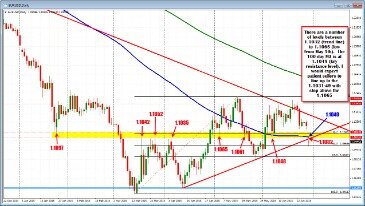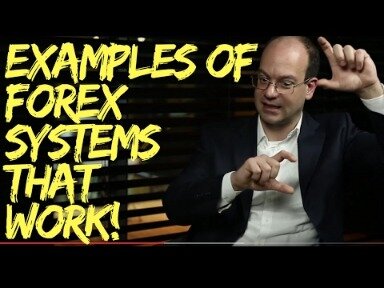Contents:

Data contained herein from third party providers is obtained from what are considered reliable sources. However, its accuracy, completeness or reliability cannot be guaranteed. Stay informed on the most impactful business and financial news with analysis from our team. In other words, when using forward PE ratio to justify a stock purchase, it’s buyer beware. There’s no single “good” PE ratio because it’s a comparison tool, not a benchmark figure. Many or all of the products featured here are from our partners who compensate us.
While this can go on for some time, eventually the stock’s price may drop. And when a “hot stock” falls out of favor, the ensuing price decline can be swift and painful. ExxonMobil’s current P/E could be compared with its historical average, giving an investor insight into whether the share valuation is higher or lower than in the past. This is a basic question for every investor, and there are any number of ways to answer it.
- A P/E (price-to-earnings) ratio is a metric that compares a company’s share price to its annual net profits.
- The price-to-earnings ratio (P/E) ratio shows how a company’s share price compares to its earnings per share .
- A company whose P/E ratio seems to accurately value the stock is generally the safer option, rather than risking money on a stock that seems over or undervalued.
- For example, the ratio spiked in the late 2000s — the lead-up to the Great Recession — and fell to a below-average value in the early 2010s, as the post-Great Recession bull market began.
In this article we’ll take and in-depth look at the P/E ratio including how it’s calculated, how investors should analyze P/E ratio, and why it’s important. The article will also compare the P/E ratio with some other commonly used financial ratios. A low P/E ratio indicates that a company’s current share price is low compared to its earnings, meaning an investor is paying less to get a dollar of a company’s overall earnings.
What’s a good P/E ratio?
Because of this, the metric allows you to easily compare 2 stocks with different prices. The P/E ratio is one of the most common metrics to judge a stock’s valuation. WallStreetZen makes it easy to find, analyze, and compare a company’s P/E ratio against its benchmarks and peers. Later stocks are ranked with a score of 10 to 0, with 10 having the lowest positive PE ratio to 0 having the lowest negative PE ratio.
How To Evaluate Stocks: 4 Basic Elements Of Value – Martinez Tribune
How To Evaluate Stocks: 4 Basic Elements Of Value.
Posted: Fri, 14 Apr 2023 22:29:59 GMT [source]
Depending on your Good price to earnings ratio goals, you can adjust the stocks, funds, and ETFs in your portfolio and monitor your growth/value orientation via your portfolio’s average P/E ratio. In this example, assume a fictional bank has shares valued at $23.10, while the earnings per share sat at $3.14. Using the P/E ratio, one can determine that the company was trading at about 7 times their earnings. The P/E ratio measures the current price of a share relative to the EPS, or Earnings per Share. Conversely, just because a company has a lower P/E does not mean that its stock is a buy. In this case, it would be wise to do extensive research to determine why the company has a lower P/E before jumping into a trade.
That’s why relative valuation metrics like the P/E ratio are a good reference point, but cannot tell you whether a stock is a good investment. PE is calculated daily for over 6,000 stocks in the historical database. Also, generally, it is better to compare stocks within a sector or industry as several companies in sectors like Tech usually trade at a higher P/E than companies in the consumer staples sector.
Latest Equities articles
Share insights in a community and access a wealth of educational content. Wealthspire Advisors LLC is a registered investment adviser and subsidiary company of NFP Corp. P/E Ratio Meaning The Price/Earnings Ratio (P/E Ratio) is a ratio used by investors to help evaluate how cheap or … Wealthspire Advisors is a registered investment adviser and subsidiary company of NFP Corp.

The P/E ratio is derived by taking the price of a share over its estimated earnings. When deciding which cheap stocks to buy, it’s important to factor in their potential to grow. After two banner years in 2020 and 2021, stocks fell into a bear market in 2022.
Shiller PE ratio
Consider this, during the Great Recession technology https://forex-world.net/s had lower P/E ratios than consumer staple stocks. That’s because investors expected consumer staples, like toothpaste and groceries, were expected to outperform tech stocks in the near-term. To give you some sense of what average for the market is, though, many value investors would refer to 20 to 25 as the average P/E ratio range.
Likewise, EPS comes in two different forms for past and projected future earnings. Different industries or sectors also tend to have different P/E ranges that are considered normal. While food wholesalers may trade for, say, a P/E ratio of 17, aerospace/defence contractors often trade more in the range of 35. When a company has no earnings or is posting losses, in both cases P/E will be expressed as “N/A.” Though it is possible to calculate a negative P/E, this is not the common convention.
This could indicate that investors are expecting high future growth for that company, but the investment is riskier overall. Earnings per share is how much net profit the company sees each year, divided by the total number of outstanding shares . In a trailing P/E analysis, the earnings per share is based on the previous 12 months of earnings, while a future P/E analysis looks at projected earnings from analysts and the company itself. However, a forward P/E relies heavily on estimations from analysts and the company itself.
P/E Ratio – Price-to-Earnings Ratio Formula, Meaning, and Examples
Companies with losses or no profit have an undefined P/E ratio (usually shown as “not applicable” or “N/A”); sometimes, however, a negative P/E ratio may be shown. Companies with robust corporate governance command higher P/E than their peers as good oversight goes a long way in strengthening investor confidence in the stock. High and stable dividend-paying companies also command high P/E in part because it shows fundamental strength in a company’s ability to reward shareholders. While the P/E ratio is typically used to compare a stock to a competitor or benchmark, the CAPE ratio is used on broader equity indices, to determine whether the entire market is over or undervalued. A low P/E ratio can be a good thing but it’s highly dependent on the stock in question. It can be an indication of an undervalued share, but it can also be a sign of poor accounting and low growth potential.
Generally, a stock with a PEG ratio of 1 or less is considered an undervalued investment because its price is low compared to growth expectations. The P/E ratio is a standard part of stock research that investors use to compare company stock prices within an industry or against the broader market, such as the S&P 500. Investors also use the P/E ratio to determine if a stock is undervalued or overvalued in order to help them decide whether they should buy, sell or hold a stock. P/Es ratios can be a useful guidepost for investors, but not the only one. A high ratio might look alarming at first; but it might be justified by the company’s earnings growth rate.
The company could be cheap for a reason, such as the number of customers are in decline. Still, if the forward P/E is lower than the trailing P/E then the market expects earnings to increase in the future. The downside to using future expected earnings is that earnings expectations might be downplayed by the company.
Why Use the Price Earnings Ratio?
Differentiating between overvalued stocks and growth stocks comes down to further analysis. Or is there a better reason investors are anticipating higher future returns? These are questions you could ask to decide if it might be time to buy, sell or hold. To arrive at a company’s PE ratio, you’ll need to first know its EPS, which is calculated by dividing the company’s net profits by the number of shares of common stock it has outstanding.
Some Confidence Is Lacking In DEAG Deutsche Entertainment Aktiengesellschaft’s (HMSE:LOU) P/E – Yahoo Finance
Some Confidence Is Lacking In DEAG Deutsche Entertainment Aktiengesellschaft’s (HMSE:LOU) P/E.
Posted: Fri, 14 Apr 2023 12:37:05 GMT [source]
There is no clear answer, but investors need to use the P/E ratio to determine whether or not it accurately reflects the company’s valuation. A higher P/E ratio isn’t necessarily bad, and the same way that a low P/E ratio isn’t good. When determining a good P/E ratio, investors should focus more on the forward P/E ratio because it gives you more information about the future earnings of the company and what the valuation will be.
Is a PE ratio of 5 good?
The forward P/E can be useful for high-growth companies or younger companies that have less historic data to rely on. However, as estimates can be adjusted to make a company look more attractive to investors, the forward P/E should always be taken with a pinch of salt. By comparing this figure to an industry benchmark, we can see if Tesla is trading above or below average. For example, if the US Auto sector on the S&P 500 has an average P/E ratio of 50.2, TSLA is trading well above the benchmark.
And while it may or may not represent an excellent value at that price, the stock may not rebound in any meaningful way until investors perceive there to be some catalyst. In addition, there can be situations where a company has a low P/E ratio simply because its future earnings prospects are dim. This can create a “value trap,” where a stock looks cheap by comparison but demonstrates in the future that there was a reason it was cheap. Price-to-book ratio, which is the current stock price divided by the per-share value of shareholders’ equity market value over book value. This is suitable for evaluating capital-intensive industries such as energy and transportation; not suitable for companies with intangible assets such as intellectual property.
Not Many Are Piling Into China Shenshan Orchard Holdings Co. Ltd. (SGX:BKV) Stock Yet As It Plummets 57% – Yahoo Finance
Not Many Are Piling Into China Shenshan Orchard Holdings Co. Ltd. (SGX:BKV) Stock Yet As It Plummets 57%.
Posted: Fri, 14 Apr 2023 22:44:27 GMT [source]
This ratio gives the value investors give to each dollar of future earnings. Investors not only use the P/E ratio to determine a stock’s market value but also in determining future earnings growth. For example, if earnings are expected to rise, investors might expect the company to increase its dividends as a result. Higher earnings and rising dividends typically lead to a higher stock price. The P/E ratio is calculated by dividing the stock’s current price by its latest earnings per share. The price to earnings ratio can be used to measure the value of a company.
Other companies may overstate the estimate and later adjust it going into their nextearnings announcement. Furthermore, external analysts may also provide estimates, which may diverge from the company estimates, creating confusion. The P/E ratio of the S&P 500 has fluctuated from a low of around 5x to over 120x . The long-term average P/E for the S&P 500 is around 16x, meaning that the stocks that make up the index collectively command a premium 16 times greater than their weighted average earnings. If earnings are negative, the P/E ratio can be calculated, but a negative P/E ratio is generally not useful for comparison purposes. P/E ratios can be used for valuations and identifying the best stocks to buy.
Here are the answers to some of the most frequently asked questions regarding P/E ratios.Is a high P/E ratio good? Generally speaking, a high P/E ratio indicates that a stock is expensive compared to similar stocks with lower P/E ratios. It’s important to look at P/E ratios in the context of other factors that make a company worth investing in. Analysts calculate a forward P/E ratio by dividing the stock’s share price by estimated future earnings. You find a trailing P/E ratio by dividing a stock’s share price by the earnings per share, or EPS, which is simply the total net profits from the last year divided by the total number of outstanding shares. The PEG ratio measures the relationship between the price/earnings ratio and earnings growth to provide investors with a more complete story than the P/E alone.
